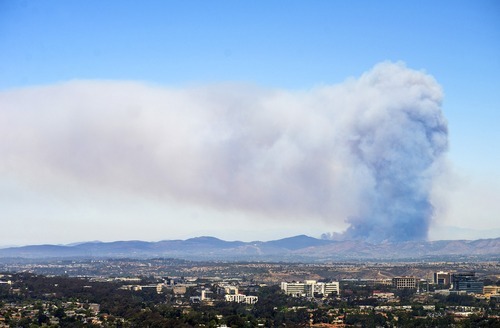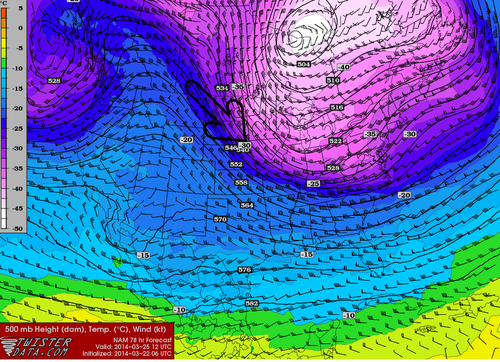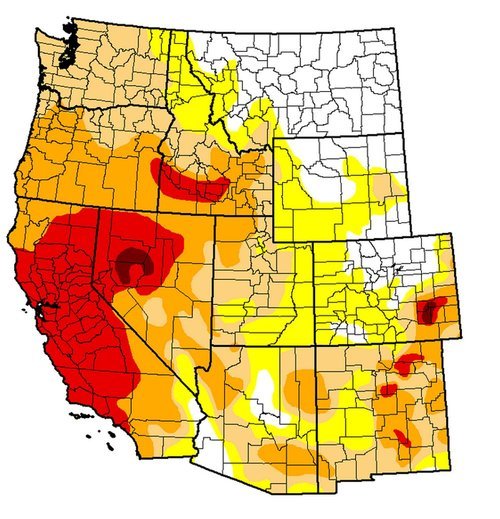Wildfires Torch California, Helped by Strong Winds and Drought
This past week several wildfires have been burning out of control in San Diego County, just north of San Diego. It is not known whether any of the fires were started intentionally or not, however, the weather has played a significant role in hampering firefighting efforts. As of Friday evening there were four wildfires burning in the county which were all over 1,000 acres in size, and only one of these four was above 25% contained. There are two main points to note of as to why weather has played such a significant role in fueling the fires.

The Santa Ana Winds are the first to have a big impact on wildfires currently burning out of control in Southern California. These winds occur when air blows towards the Pacific Ocean from the mountain ranges to the east. As the air descends the mountain sides it warms and its relative humidity decreases causing for hot and dry winds. This past week, relative humidity as low as 3% was observed by stations in southern California, coupled with winds of 50km/h, this produced prime wildfire conditions. The second reason as to why the wildfires have been difficult to contain is the current drought situation in the region. A large ridge of high pressure has been persistent over the west coast for most of this past winter and part of this spring, making precipitation difficult to come by. The drought index currently indicates that an extreme drought (second highest tier) is occurring in the region where the fires are burning. In turn, the wildfires have little trouble spreading to moisture-starved vegetation and dried out brush.
This weekend offers a mixed-bag to firefighters. Strong winds and scorching temperatures will persist during the day, but winds will now be out of the west causing for slightly moister air coming onshore from the Pacific. Regardless, the Storm Prediction Center maintains an “elevated” fire risk for this weekend.




